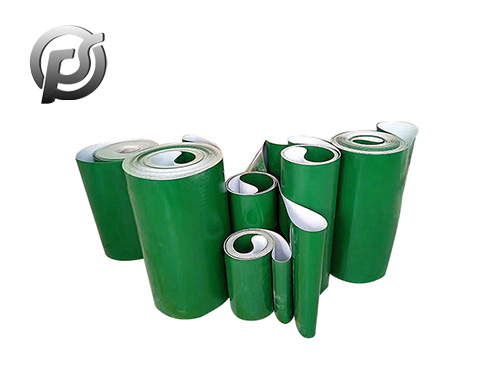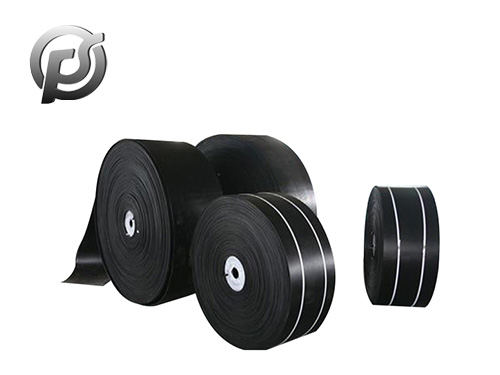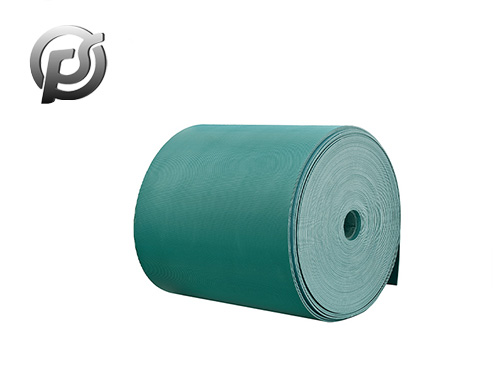Heat-resistant conveyor belt is a kind of transport belt with characteristics used in real high temperature environment. Heat-resistant conveyor belt is widely used in steel, cement, chemical industry and other occupations.
Main structure: It is successively composed of high temperature resistant burning layer, transition layer, organic insulation layer, strong layer and heat resistant layer.
Features: When the glue is exposed to high temperature, it covers the microporous carbonized layer, which is resistant to combustion, can prevent further heat transfer to the belt body, and reduce the influence of the inner strength of the belt. The carbonized layer generates irregular fine cracks in the working process of the strip body, which is cooled by the strip body.
Heat-resistant conveyor belt is used to transport high temperature materials, such as sinter, hot coke, cement clinker, hot castings, etc. According to the first embodiment of heat resistance and different heat resistance grades, respectively choose EPDM or styrene butadiene rubber cover rubber; High strength high impregnated polyester canvas or cotton canvas for strong layer. Heat-resistant glass cloth can be added between the cover glue and the skeleton layer to improve the service life of the heat-resistant belt. According to the user request, can be made into a ring belt. Heat resistant conveyor belt is made of multi-layer rubber cotton canvas (TC) covered with high temperature or heat resistant rubber, vulcanized together by high temperature, suitable for transporting hot coke carbon, cement, slag and hot castings below 175℃.
Heat resistant conveyor belt work efficiency improvement method.
1. The connection between the diameter of the driving drum of the conveyor belt and the cloth layer of the conveyor belt, the matching of the driving drum, the reversing drum and the request for the groove Angle of the idler should be reasonably selected according to the design regulations of the conveyor.
2, the direction of the feeding should be along the direction of the conveyor belt, in order to reduce the impact of the material falling on the conveyor belt should be adopted chute, reduce the distance of the material drop; Conveying belt receiving section, should shorten the distance of the roller and choose the buffer roller as the material leakage, the conveyor belt should choose a soft and suitable baffle to avoid the baffle being too hard and scratching the surface of the conveyor belt.
3, avoid transport with load start.
4. If the conveyor belt deviates from the attack, measures should be taken in time to correct it.
5. Different types and standard layers of conveyor belts should not be used together, and the joint is best bonded.
6. The type, structure, standard and number of layers of the conveyor belt should be selected reasonably according to the application conditions.
7. The running speed of the conveyor belt should not be greater than 2.5m/s. For materials with large agglomeration and wear and unloading equipment for fixed pears, low speed should be selected as much as possible.
8. During the use of the conveyor, if the idler roller is short, it should be added and repaired in time; the idler roller is covered by the material, forming a reversal, to avoid leakage of material stuck between the idler roller and the belt, pay attention to the smooth movement of the conveyor belt, But the conveyor belt cannot be oiled.
9. Avoid the conveyor belt being blocked by the frame, column or material block, avoid breakage and cracking, and if the conveyor belt is partially damaged, repair it with artificial cotton in time to avoid expansion.
 Optimizing Operations with PE Conveyor Belts: Durability, Efficiency, and Versatility
Optimizing Operations with PE Conveyor Belts: Durability, Efficiency, and Versatility
 Exploring the Efficiency and Versatility of Light Conveyor Belts
Exploring the Efficiency and Versatility of Light Conveyor Belts
 Polyester Conveyor Belts: Enhancing Efficiency and Reliability in Material Handling
Polyester Conveyor Belts: Enhancing Efficiency and Reliability in Material Handling